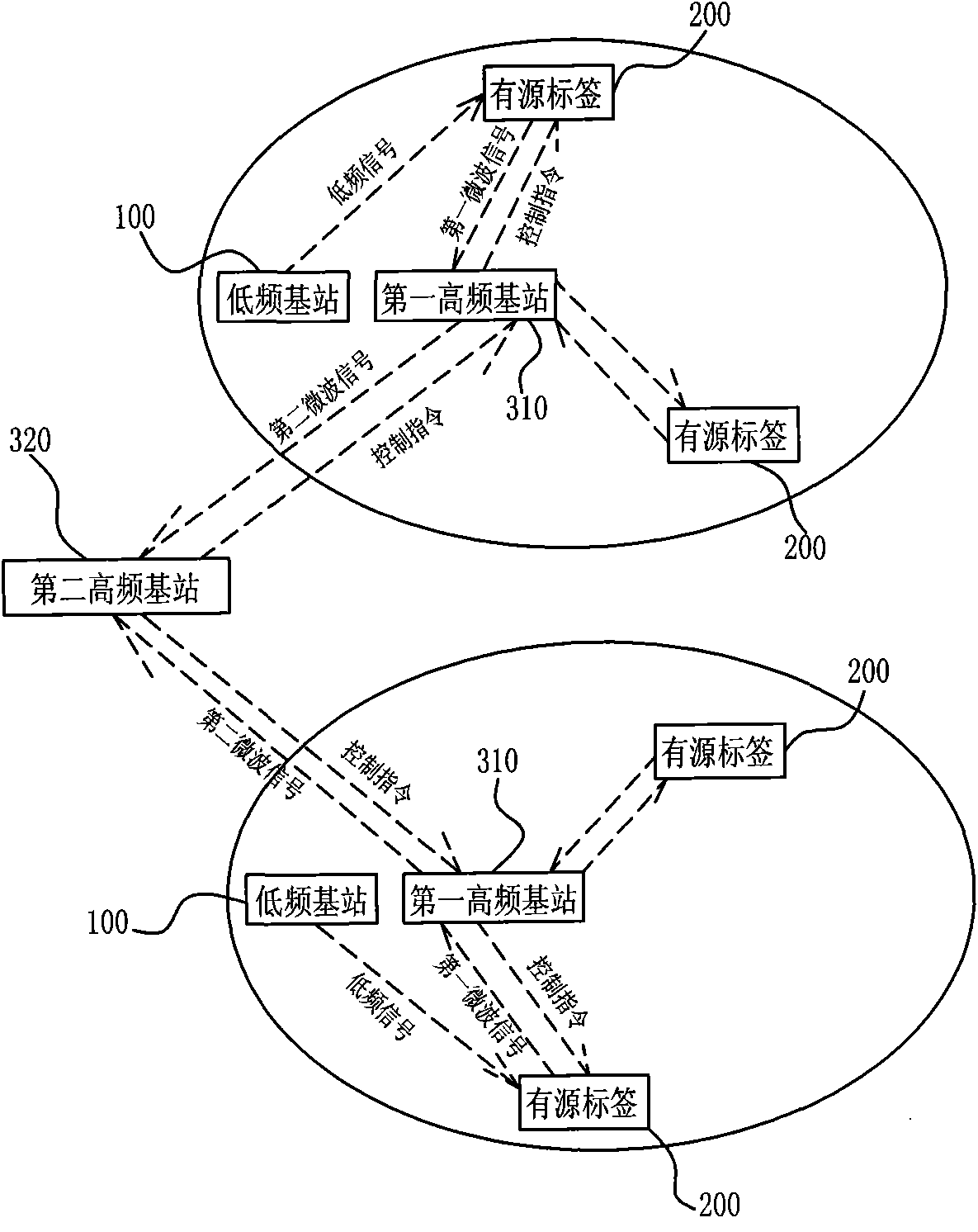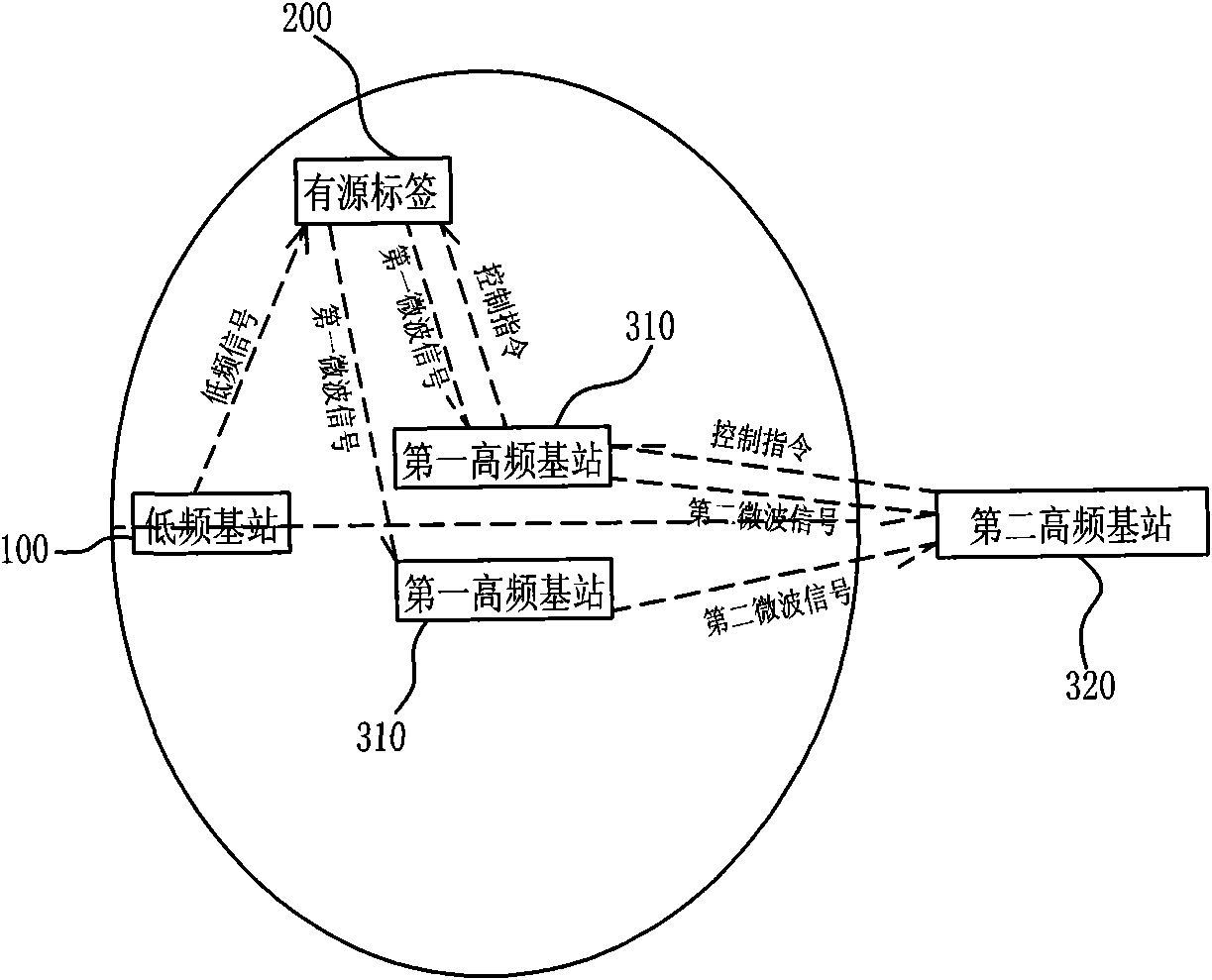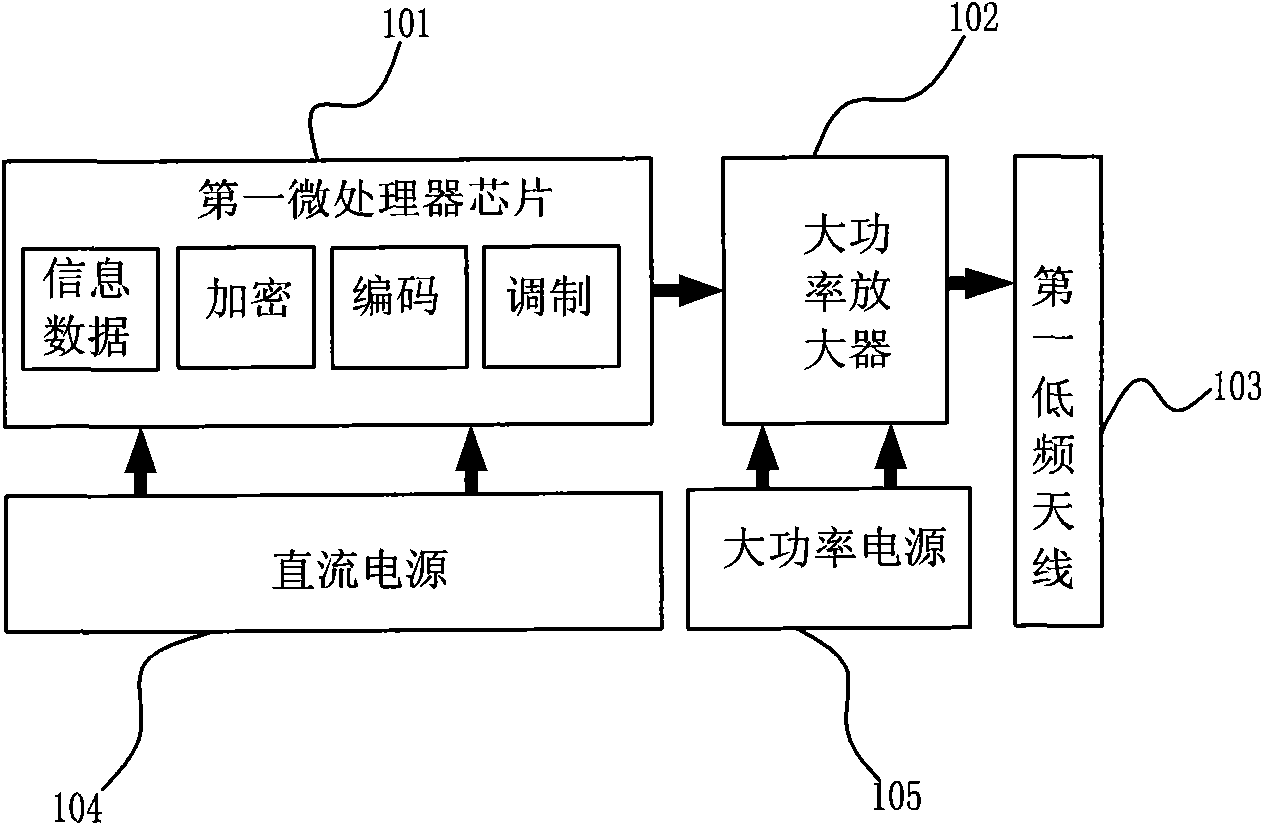Radio frequency identification method and radio frequency identification system
A radio frequency identification and tag identification technology, applied in the field of radio frequency identification, can solve the problems of high work energy consumption, affecting the use of tags, waste of energy consumption, etc., achieving the effect of large wireless network capacity, reducing power consumption, and improving positioning accuracy
- Summary
- Abstract
- Description
- Claims
- Application Information
AI Technical Summary
Problems solved by technology
Method used
Image
Examples
Embodiment 1
[0061] This embodiment discloses a radio frequency identification system, which includes a low-frequency base station 100, an active tag 200, and a high-frequency base station 300, wherein the low-frequency base station 100 is used to generate a low-frequency signal, and the low-frequency signal includes the low-frequency The low-frequency base station code information of the base station; the active tag 200 is used to receive the low-frequency signal, compare the low-frequency signal with the low-frequency base station code pre-stored in it, and wake up the active tag if the two match A microprocessor module, the microprocessor module instructs the high-frequency module of the active tag to perform information interaction with the high-frequency base station through microwave signals; the high-frequency base station 300 is used to receive and send microwave signals, and the received The information in the microwave signal is forwarded to other devices for use.
[0062] imag...
Embodiment 2
[0067] figure 1 It is a schematic diagram of the principle structure of the radio frequency identification method in a wide range of the present invention. In the figure, the supervision scope is only schematically divided into two sub-regions. It should be noted that it can be divided into multiple sub-regions according to the actual supervision scope; in each The low-frequency base station 100 and the first high-frequency base station 310 are installed in the sub-area, and the size of the sub-area is consistent with the low-frequency coverage size of the low-frequency base station 100 installed in the sub-area. A second high-frequency base station 320 is installed between the central control platform (not shown) of the monitoring and management system.
[0068] The following is the data transmission and interaction process within the regulatory scope:
[0069] 1. When the active tag 200 enters the supervision range, it will receive the low-frequency signal transmitted by th...
Embodiment 3
[0110] figure 2 It is a schematic diagram of the principle structure of the narrow-range radio frequency identification method of the present invention, which is suitable for monitoring and management systems with a narrow regulatory scope. As shown in the figure, the supervision area is less than or equal to the low-frequency coverage area of the low-frequency base station 100 installed in this area, and at least two paired first high-frequency base stations 310 are installed in the supervision area. It should be noted that Only two pairs are schematically shown in the figure. Of course, the present invention also includes other multi-pair situations. The antennas of the first high-frequency base stations 310 are all directional antennas, and the directions of each directional antenna are opposite.
[0111] The following is the data transmission and interaction process within the regulatory scope:
[0112] 1. When the active tag 200 enters the supervision area, it will re...
PUM
 Login to View More
Login to View More Abstract
Description
Claims
Application Information
 Login to View More
Login to View More - R&D
- Intellectual Property
- Life Sciences
- Materials
- Tech Scout
- Unparalleled Data Quality
- Higher Quality Content
- 60% Fewer Hallucinations
Browse by: Latest US Patents, China's latest patents, Technical Efficacy Thesaurus, Application Domain, Technology Topic, Popular Technical Reports.
© 2025 PatSnap. All rights reserved.Legal|Privacy policy|Modern Slavery Act Transparency Statement|Sitemap|About US| Contact US: help@patsnap.com



